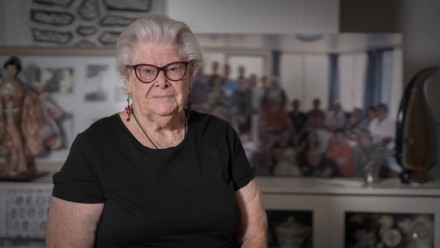Vision Cognition
For most people, vision is the primary sensory modality, allowing us to navigate through the world and interact with it. It is our means of driving safely through traffic, avoiding obstacles, perceiving food we want to eat, reading, and recognising the face of a loved one. But at any given moment, there is far more information available to process in visual scenes than our brain is capable of processing to the level of awareness. This means that visual attention has a fundamental triaging role to play in shaping our perception of the world, by selecting certain relevant information for privileged processing, while filtering out other information.
In the Visual Cognition lab, we are interested in the factors that influence the regulation of human attentional resources, and the perceptual consequences of applying attention in different ways.
The practical implications of our work include understanding the attentional mechanisms of clinical conditions, such as anxiety, as well as improving our understanding of how to select and train individuals for attention-demanding roles (e.g., emergency vehicle drivers).
| Project | Status |
|---|---|
| Anxiety and Attention | Potential |
| Motion Perception | Current |
| The Spatial and Temporal Dynamics of Conscious Object Perception | Potential |
| Visual Attention – Flexibility and Perceptual Consequences | Potential |
Goodhew, S.C., & Edwards, M. (2019). Translating experimental paradigms into individual-differences research: Contributions, challenges, and practical recommendations. Consciousness and Cognition, 69, 14-25. doi:10.1016/j.concog.2019.01.008
Lawrence, R.K., Edwards, M., & Goodhew, S.C. (2018). Changes in the spatial spread of attention with ageing. Acta Psychologica, 188, 188-199. doi: 10.1016/j.actpsy.2018.06.009
Dawel, A., Wong, T.Y., McMorrow, J., Ivanovici, C., He, X., Barnes, N., Irons, J., Gradden, T., Robbins, R., Goodhew, S.C., Lane, J., & McKone, E. (2018). Caricaturing as a general method to improve poor face recognition: Evidence from low-resolution images, other-race faces, and older adults. Journal of Experimental Psychology: Applied. doi: 10.1037/xap0000180.
Cox, J. A., Christensen, B. K., & Goodhew, S. C. (2018). Temporal dynamics of anxiety-related attentional bias: is affective context a missing piece of the puzzle? Cognition & Emotion, 32(6), 1329-1338. doi: 10.1080/02699931.2017.1386619
Corke, M., Bell, J., Goodhew, S.C., Smithson, M., & Edwards, M. (2018). Perceived time slows during fleeting fun or fear. Quarterly Journal of Experimental Psychology, 71(2), 562-567. doi: 10.1080/17470218.2016.1264000
Boal, H.L., Christensen, B.K., & Goodhew, S.C. (2018). Social anxiety and attentional biases: A top-down contribution? Attention, Perception, & Psychophysics, 80(1), 42-53. doi: 10.3758/s13414-017-1415-5
Goodhew, S.C., Lawrence, R.K., & Edwards, M. (2017). Testing the generality of the zoom-lens model: Evidence for visual-pathway specific effects of attended-region size on perception. Attention, Perception, & Psychophysics, 79(4), 1147-1164. doi: 10.3758/s13414-017-1306-9
Goodhew, S.C. (2017). What have we learned from two decades of object substitution masking? Time to update: object individuation prevails over substitution. Journal of Experimental Psychology: Human Perception & Performance, 43(6), 1249-1262. doi: 10.1037/xhp0000395
Goodhew, S.C., & Edwards, M. (2017). Objects but not concepts modulate the size of the attended region. Quarterly Journal of Experimental Psychology, 70(7), 1353-1365. doi:10.1080/17470218.2016.1183687.
Goodhew, S.C., & Kidd, E. (2017). Language use statistics and prototypical grapheme colours predict synaesthetes' and non-synaesthetes' word-colour associations. Acta Psychologica, 173, 73-86. doi: 10.1016/j.actpsy.2016.12.008
Goodhew, S.C., & Edwards, M. (2016). Object individuation is invariant to attentional diffusion: Changes in the size of the attended region do not interact with object substitution masking. Cognition, 157, 358-364. doi: 10.1016/j.cognition.2016.10.006.
Goodhew, S.C. (2016). Review: When masks reveal more than they hide. American Journal of Psychology, 129(3), 350-355. doi: 10.5406/amerjpsyc.129.3.0350
Goodhew, S.C., & Kidd, E. (2016). The conceptual cueing database: Rated items for the study of the interaction between language and attention. Behavior Research Methods, 48, 1004-1007. doi: 10.3758/s13428-015-0625-9
Goodhew, S. C., Shen, E., & Edwards, M. (2016). Selective spatial enhancement: Attentional spotlight size impacts spatial but not temporal perception. Psychonomic Bulletin & Review, 23(4), 1144-1149. doi: 10.3758/s13423-015-0904-6
Goodhew, S.C., Greenwood, J.A., & Edwards, M. (2016). Categorical information influences conscious perception: An interaction between object-substitution masking and repetition blindness. Attention, Perception, & Psychophysics, 78(4), 1186-1202. doi: 10.3758/s13414-016-1073-z
Goodhew, S.C., & Clarke, R. (2016). Contributions of the parvocellular and magnocellular pathways to visual perception near the hands are not fixed, but can be dynamically altered. Psychonomic Bulletin & Review, 23(1), 156-162. doi: 10.3758/s13423-015-0844-1
Rideaux, R., & Edwards, M. (2016). The cost of parallel consolidation into visual working memory. Journal of Vision, 16(1). doi:10.1167/16.6.1
Goodhew, S.C., Edwards, M., Ferber, S., & Pratt, J. (2015). Altered visual perception near the hands: A critical review of attentional and neurophysiological models. Neuroscience & Biobehavioral Reviews, 55, 223-233. doi: 10.3758/s13423-015-0844-1
Tang, M.F., Dickinson, E., Visser, T.A.W., Edwards, M., & Badcock, D.R. (2015). The role of form information in motion pooling and segmentation. Journal of Vision, 15(15):19, 1-18. doi: 10.1167/15.15.19.
Goodhew, S. C., Freire, M. R., & Edwards, M. (2015). Enhanced semantic priming in synesthetes independent of sensory binding. Consciousness and Cognition, 33, 443-456. doi: 10.1016/j.concog.2015.02.019
Goodhew, S.C., Edwards, M., Boal, H.L., & Bell, J. (2015). Two objects or one? Similarity rather than complexity determines objecthood when resolving dynamic input. Journal of Experimental Psychology: Human Perception and Performance, 40(1), 102-110. doi: 10.1037/xhp0000022
Rideaux, R., Apthorp, D. & Edwards, M. (2015). Evidence for parallel consolidation of motion and orientation into visual short-term memory. Journal of Vision. 15(2): 1-12. doi: 10.1167/15.2.17
Bell, J., Manson, A., Edwards, M., & Meso, A.I. (2015). Numerosity and density judgments: bias for area but not for volume. Journal of Vision. 15 (2) 18, 1-14. doi:10.1167/15.2.18
Goodhew, S.C., Fogel, N., & Pratt, J. (2014). The nature of altered vision near the hands: Evidence for the magnocellular enhancement account from object correspondence through occlusion. Psychonomic Bulletin & Review, 21(6), 1452-1458. doi: 10.3758/s13423-014-0622-5
White, C., Edwards, M., Brown, J., & Bell, J. (2014). The impact of recreational MDMA “ecstasy” use on global form processing. Journal of Psychopharmacology, 28(11), 1018-1029. Doi:10.1177/0269881114546709
Goodhew, S.C., McGaw, B., & Kidd, E. (2014). Why is the sunny side always up? Explaining the spatial mapping of concepts by language use. Psychonomic Bulletin & Review, 21(5), 1287-1293. doi: 10.3758/s13423-014-0593-6
White, C., Brown, J., & Edwards, M. (2014). Alterations to global but not local motion processing in long-term ecstasy (MDMA) users. Psychopharmacology, 231(13), 2611-2622. doi: 10.1007/s00213-014-3431-7
Goodhew, S.C., Kendall, W., Ferber, S., & Pratt, J. (2014). Setting semantics: Conceptual set can determine the physical properties that capture attention. Attention, Perception, & Psychophysics, 76(6), 1577-1589. doi: 10.3758/s13414-014-0686-3.
Rideaux, R., & Edwards, M. (2014). Information extraction during simultaneous motion processing. Vision Research, 95, 1-10. doi: 10.1016/j.visres.2013.11.007
Goodhew, S.C., Boal, H.L., & Edwards, M. (2014). A magnocellular contribution to conscious perception via temporal object segmentation. Journal of Experimental Psychology: Human Perception and Performance, 40(3), 948-959. doi: 10.1037/a0035769
Edwards, M., Cassanello, C., Badcock, D.R., & Nishida, S. (2013). Effect of form cues on 1D and 2D motion pooling. Vision Research, 76, 94-104. doi: 10.1016/j.visres.2012.10.015
Goodhew, S.C., Pratt, J., Dux, P.E., & Ferber, S. (2013). Substituting objects from consciousness: A review of object substitution masking. Psychonomic Bulletin & Review, 20(5), 859-877. doi: 10.3758/s13423-013-0400-9
White, C., Brown, J., & Edwards, M. (2013). Altered Visual Perception in Long-Term Ecstasy (MDMA) Users. Psychopharmacology. 229(1), 155-165. doi: 10.1007/s00213-013-3094-9
Gozli, D.G., Goodhew, S.C., Moskowitz, J.B., & Pratt, J. (2013). Ideomotor perception modulates visuospatial cueing. Psychological Research, 77(5),528-539. doi: 10.1007/s00426-012-0461-9
Tang, M.F., Dickinson, E., Visser, T.A.W., Edwards, M., & Badcock, D.R. (2013). The Shape of Motion Perception: Global Pooling of Transformational Apparent Motion. Journal of Vision, 13(13), 1-20. doi: 10.1167/13.13.20
Goodhew, S.C., Gozli, D.G., Ferber, S., & Pratt, J. (2013). Reduced temporal fusion in near-hand space. Psychological Science, 24(6), 891-900. doi: 10.1177/0956797612463402
Edwards, M., & Rideaux, R. (2013). How many motion signals can be simultaneously perceived? Vision Research, 76, 11-16. doi: 10.1016/j.visres.2012.10.004








